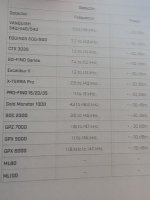NOBODY is saying that it's that simple! In fact, it's far more complicated than you're thinking....unless you're a world-class physicist and computer programmer. There are far more variables to all-digital metal detectors than just frequency selection, and in fact there are more than most people can even imagine.
For instance, did you know that ground balance on the Pro isn't the same as all other detectors? It accounts for and adjusts "Ground Phase Angle", a concept pioneered with the original Xterra line that wasn't incorporated into any other machine until the CTX3030. It is why on the original Xterras the lower the GB number the hotter the ground, which is opposite of all the old analog detectors.
The patented proprietary technology of Minelab's digital detectors is why the only authorized coils produced are either Minelab or Coiltek, and all others are inferior, reverse engineered by Ukrainian tech thieves.
Bottom line is that an all-digital detector has much more flexibility through programming than any analog machine ever dreamt of, even the majority of multi-freq units until just recently as the digital capabilities have proven themselves.

